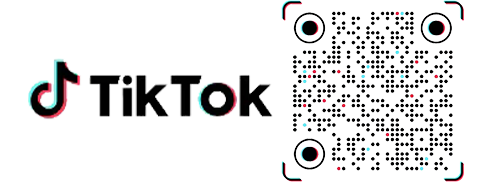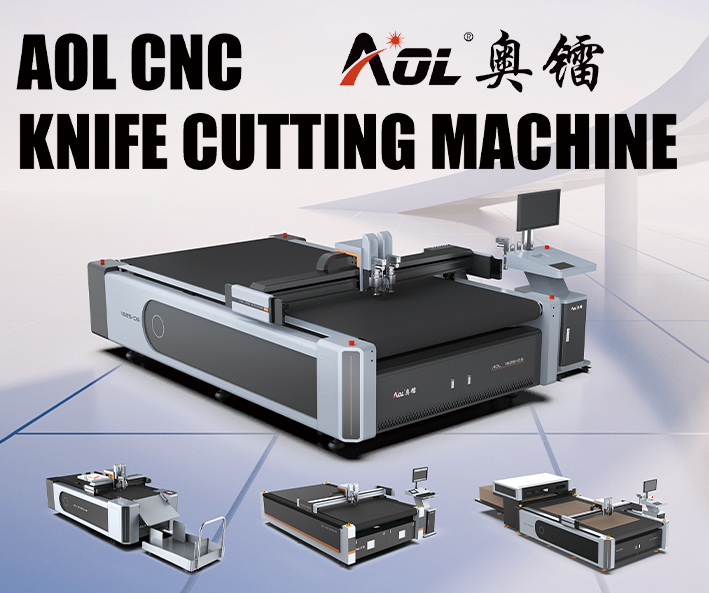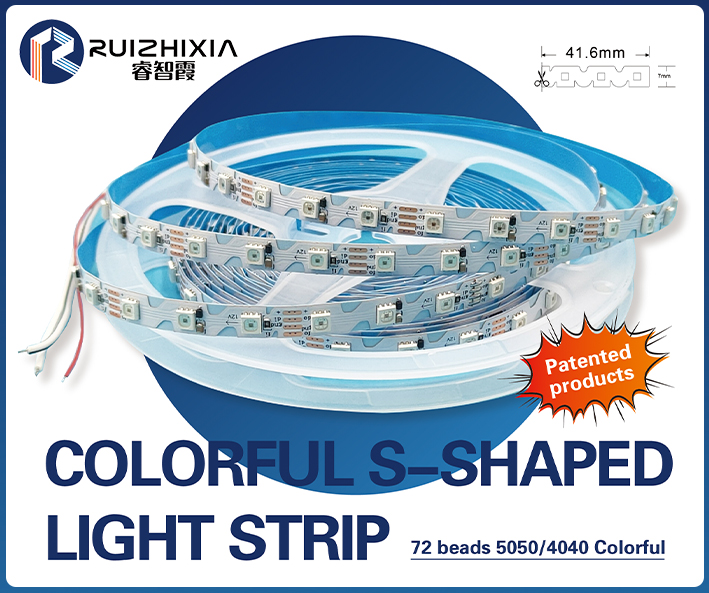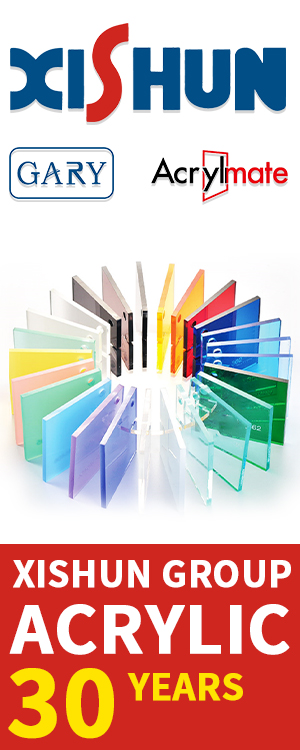During a major sports event, spectators may be forgiven if, while peering up at the scoreboard, they do not happen to wonder how the massive structure was put together. Amid the constant distractions of the game, vendors, advertisements and crowd atmosphere, chances are their attention is focused elsewhere. The scoreboard is simply a tool that provides part of the total fan experience.
There are others, however, who have a different outlook with regard to the ever-growing sports and entertainment industry. Some signmakers have found a niche within the industry by specializing in incorporating custom signage into sports venues’ scoreboard structures.
Jim Hotten, for example, is president of Ottawa-based Signs.ca, a relatively small company that has produced large-scale signage projects, including scoreboards for such stadiums as Ottawa’s Scotiabank Place, Regina’s Mosaic Stadium—where the Sasktel Maxtron scoreboard is part of the Grey Cup Legacy Project—and Michigan State University’s (MSU’s) renovated Spartan Stadium in East Lansing, Mich.
Led by production manager Paul Hallett, the Signs.ca team works out of a 929-m2 (10,000-sf) shop; but what they lack in size, they hope to make up for in project management and attention to detail.


For Mosaic Stadium, channel letters with polycarbonate faces were illuminated with LEDs.
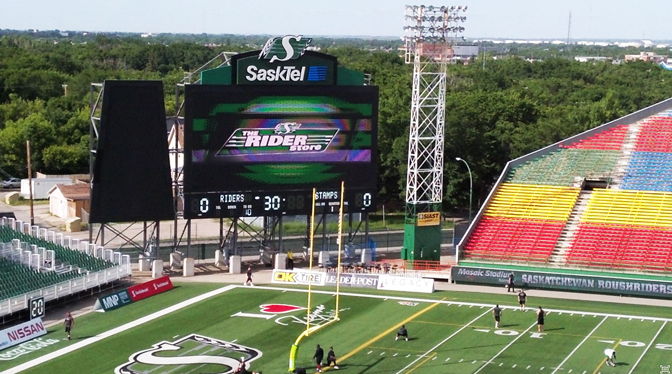
The project team spent a week installing and testing the various components. After the Roughriders’ training camp, the scoreboard made its public debut in June 2019.
Mosaic Stadium
In February 2012, a $14-million renovation plan began to move ahead to revive Regina’s aging Mosaic Stadium at Taylor Field, home to the Canadian Football League’s (CFL’s) Saskatchewan Roughriders. Fans had been promised new seating, new concessions and a new state-of-the-art scoreboard with multiple high-definition (HD) light-emitting diode (LED) displays. It was a massive job to undertake at the time, with the 2012 football season looming closer, including the 100th Grey Cup Championship.
With thousands of Roughriders fans waiting during the off-season, a whirlwind of activity took place at Mosaic Stadium. The iconic venue was given its much-needed facelift in time for the beginning of the football season in late June.
The stadium’s old Maxtron scoreboard was replaced in the northeast end zone with the new Sasktel Maxtron screen. At 7.9 x 18.3 m (26 x 60 ft), the new sign is more than twice as large as its predecessor. It is accompanied by a secondary 11.3 x 4.3-m (37 x 14-ft) LED screen that is to be used strictly for sponsorship purposes, thus freeing up the larger display for greater fan-oriented interaction.
Signs.ca added the finishing touches to the custom-designed structure and built a 4.6 x 16.5-m (15 x 54-ft) ‘centrepiece’ façade to perch atop the two massive video boards. The company worked over a three-month period alongside Icon HD, which specializes in audiovisual (AV) project management and consultation, and Panasonic, the manufacturer of the screens, to ensure the client’s design benchmarks were met.
With a sleek signage and backer design, Signs.ca’s portion of the scoreboard project included a set of 1.8-m (6-ft) tall LED-illuminated channel letters, a 2.7 x 5.5-m (9 x 18-ft) Saskatchewan Roughriders logo with 330-mm (13-in.) returns and a layered backer panel to hold all of the elements together. After the structure was built in Ottawa, it was shrink-wrapped in a protective coating, loaded onto a wide trailer and shipped more than 2,500 km (1,553 mi) to Regina.
To achieve the desired level of illumination for both the team logo and the channel letters, it was necessary to first build the channel cans with aluminum, then create formed polycarbonate faces with clear 102-mm (4-in.) returns. By doing so, a glowing effect was achieved, which can be seen as soon as the sun sets over Mosaic Stadium.
The backer panel and structure that hold the logo and letters were constructed in such a way that each piece would fit together seamlessly. This made the installation of these components a one-step process, as a crane was able to hoist the signage in once piece and fasten it to the existing steel scoreboard framework.
That framework was completed just before the signs arrived. The project team then spent roughly a week installing the components and testing them to make sure everything was in working order, with no hiccups.
The new Maxtron screens were used during the Roughriders’ training camp to show hopeful players inspiring video footage of their die-hard fans showing support and offering motivation for the upcoming season.
Finally,the Roughriders kicked off their home opener against the Calgary Stampeders. It was a close game, but even though Regina’s team lost 33-31, fans left the renovated stadium with a new feeling of pride in their team and its home.
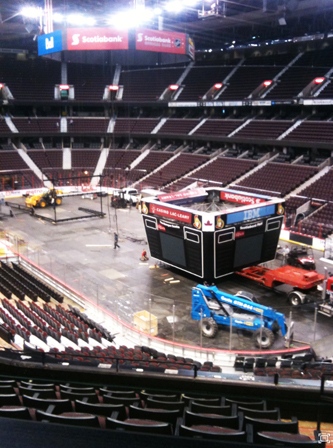
The crew had only 48 hours to dismantle the old Scotiabank Place scoreboard and install the new one.
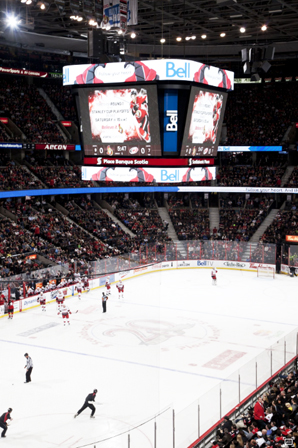
The scoreboard was featured not only during Senators home games, but also when Ottawa hosted the NHL All-Star Game.
Scotiabank Place
In 1996, the patience of hockey fans in Canada’s capital region was rewarded with the construction of a large new venue to house the National Hockey League’s (NHL’s) Ottawa Senators, as well as to host other major events. Local software developer Corel became the first major sponsor of this building.
Then named the Palladium, the facility represented a mammoth undertaking just outside Ottawa’s downtown core, constructed on farmland in the steadily growing suburb of Kanata. Boasting more than 19,000 seats, the new venue meant the Senators would finally have a home on par with those of other NHL clubs, to better meet demand in one of the strongest hockey markets anywhere in the world.
Much has changed since then, including a number of sponsorship deals and facelifts for the stadium over the years. When Scotiabank took over the naming rights in 2006, for example, the Palladium became Scotiabank Place. With such name changes came the need to replace signage throughout the arena, ranging from indoor displays to the building’s massive outdoor façade
facing Highway 417.
At the beginning of the 2011/2012 hockey season, Scotiabank Place announced plans to upgrade the arena’s AV capabilities by replacing its scoreboard with a new, HD-capable structure that would overhang centre ice, complemented by the addition of interactive LED ‘ribbon’ features. This $5-million project was the next step in terms of keeping the arena on par with newer NHL venues.
Icon HD, again, was awarded the contract in conjunction with Panasonic to provide the HD LED screens. Both companies had past experience and expertise working with sports venues. Signs.ca was brought on board with responsibility to dismantle the old scoreboard while Icon HD and Panasonic assembled the new structure. Signs.ca also provided and incorporated the rest of the new signage.
The sign package was extensive and intricate. The existing 27.9 m2 (300 sf) of video board faces were replaced with new HD screens totalling more than 195 m2 (2,100 sf), sponsored by Bell Canada and Scotiabank. Two LED ribbon displays were specified, one above and one below the video screens.
A 6 x 6-m (20 x 20-ft) LED-illuminated dimensional Scotiabank Place logo was fastened to the bottom of the structure. Four sets of 762-mm (30-in.) tall channel letters, each spelling out ‘Bell,’ were mounted vertically onto backer panels in the corners. Finally, four sets of illuminated Scotiabank Place ‘name rings’ were attached, one to each face of the scoreboard.
The large, dimensional logo on the scoreboard’s bottom panel was designed with formed faces for the ‘flying’ letter S and 38-mm (1.5-in.) acrylic returns were used to achieve a glowing effect—similar to the effect that would be created later with the Mosaic Stadium letters—and a sense of prominence for the arena’s main sponsor. As Bell was another main contributor to the scoreboard project, the channel letters spelling out its name were designed in a similar fashion, with acrylic returns, and acted as ‘covers’ for the structure holding the large screens.
Once the framework was complete, Signs.ca was also tasked with custom-forming aluminum covers for all of the exposed metal that fastened the LED screens in place. This involved polishing the remaining components.
Between the stadium’s hockey games, concerts and other events, it was difficult to find time to remove the existing scoreboard structure and install all of the new components, once they had been fabricated. The only break in the venue’s schedule in late 2011 came with two days at Christmas.
This meant the crew would have no more than 48 hours to dismantle and remove the old scoreboard and install the new structure. The installers worked around the clock to deliver this ‘Christmas present’ to Ottawa Senators fans, who returned to the venue for a game against the Montreal Canadiens. And soon thereafter, in January 2012, the scoreboard was showcased to hockey fans everywhere when Ottawa hosted the Tim Hortons NHL All-Star Game. The stadium’s new LED screens’ display capabilities were used to support the event’s many multimedia needs, with team representatives, sponsors and everyone else involved in the project looking above centre ice.
Spartan Stadium
The love of football runs deep in East Lansing, Mich., where the MSU Spartans have called Spartan Stadium their home for more than 89 years. Once dubbed “the snake pit” by ESPN reporter Lee Corso, the stadium has a reputation as one of the most intimidating venues for opposing Big 10 Conference teams to visit. With a maximum capacity of 75,000, it is one of the largest stadiums in the National Collegiate Athletic Association (NCAA).
With an explosion in the popularity of college football across the U.S., there have been huge expansions of and improvements to many NCAA venues. At MSU, following two of the Spartans’ most successful seasons in 2010 and 2011, the board of directors approved a stadium renovation project with a budget topping $9 million. The scope of the project included removing and replacing the existing scoreboards with a pair of 202-m2 (2,170-sf) LED screens in the north end zone and one 483- m2 (5,200-sf) screen in the south end zone. In addition, a 3 x 137-m (10 x 450-ft) LED wall would span the entire north end zone.
With the addition of the new LED screens, much of the stadium’s advertising opportunities would move from static to dynamic signage, with a cleaner, updated look. This change left a massive canvas on the scoreboard structures for channel letters and logos.
So, the project also included an overhaul of the stadium’s permanent and corporate sponsorship signage. There were two sets of 2.1-m (7-ft) tall illuminated channel letters spelling out ‘Spartan Stadium,’ three illuminated Spartan head logos ranging from 4.9 to 8.5 m (16 to 28 ft) tall and two 9.8 x 9.8-m (32 x 32-ft) illuminated flexible-face sign boxes.
Working again alongside Icon HD, which designed the plans, Signs.ca was contracted to provide all of the signage to be incorporated in the new scoreboard structures. This was accomplished using aluminum and polycarbonates.
The large Spartan head logos were built as halo-illuminated sign faces with a dark brushed-aluminum finish, mounted on white background panels to increase contrast. The channel letters spelling out the venue name were built with brushed aluminum, 76-mm (3-in.) formed polycarbonate faces and 127-mm (5-in.) returns. The formed faces offered dimensionality to help set the letters apart from others. By not using trim around the edges of the faces, light was allowed to pass through the area between each face and joint to the sign can, resulting in a bolder style of illumination.
The flexible-face sign boxes were fabricated in four identical 2.4-m (8-ft) tall sections, then through-bolted to one another, for structural, shipping and installation purposes. The large-format faces were printed in high resolution in two 4.9-m (16-ft) sections, then seamed together, creating two larger-than-life images of MSU players in action.
All of the scoreboard construction and testing work was complete by August 10, 2012, well in advance of the Spartans’ home opener against the Boise State Broncos on August 31. The Spartans came from behind in the fourth quarter of that game to win 17-13, to the delight of a capacity crowd that got its first opportunity to see a victory march up close on 896 m2 (9,640 sf) of HD LED screens.
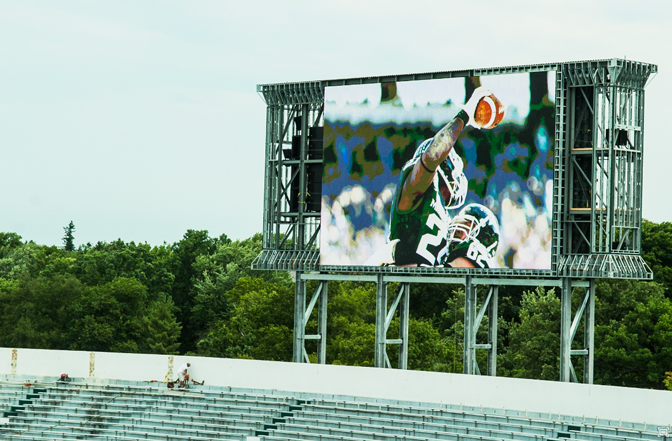
The Spartans won their home opener on August 31, 2012, giving fans their first opportunity so see a victory march on the giant HD LED screens.
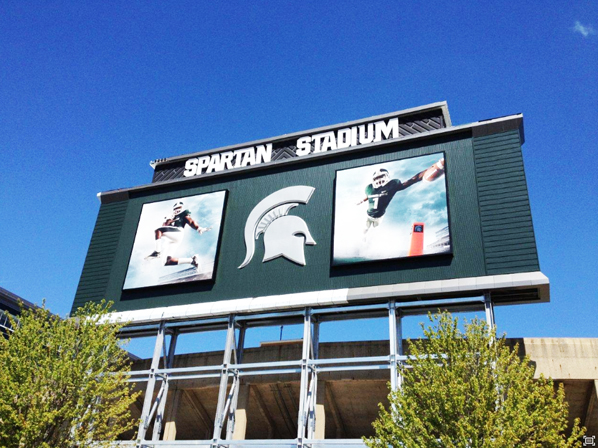
Large-format printing yielded two larger-than-life images of MSU players in action, which were installed on illuminated flexible-face sign boxes.


